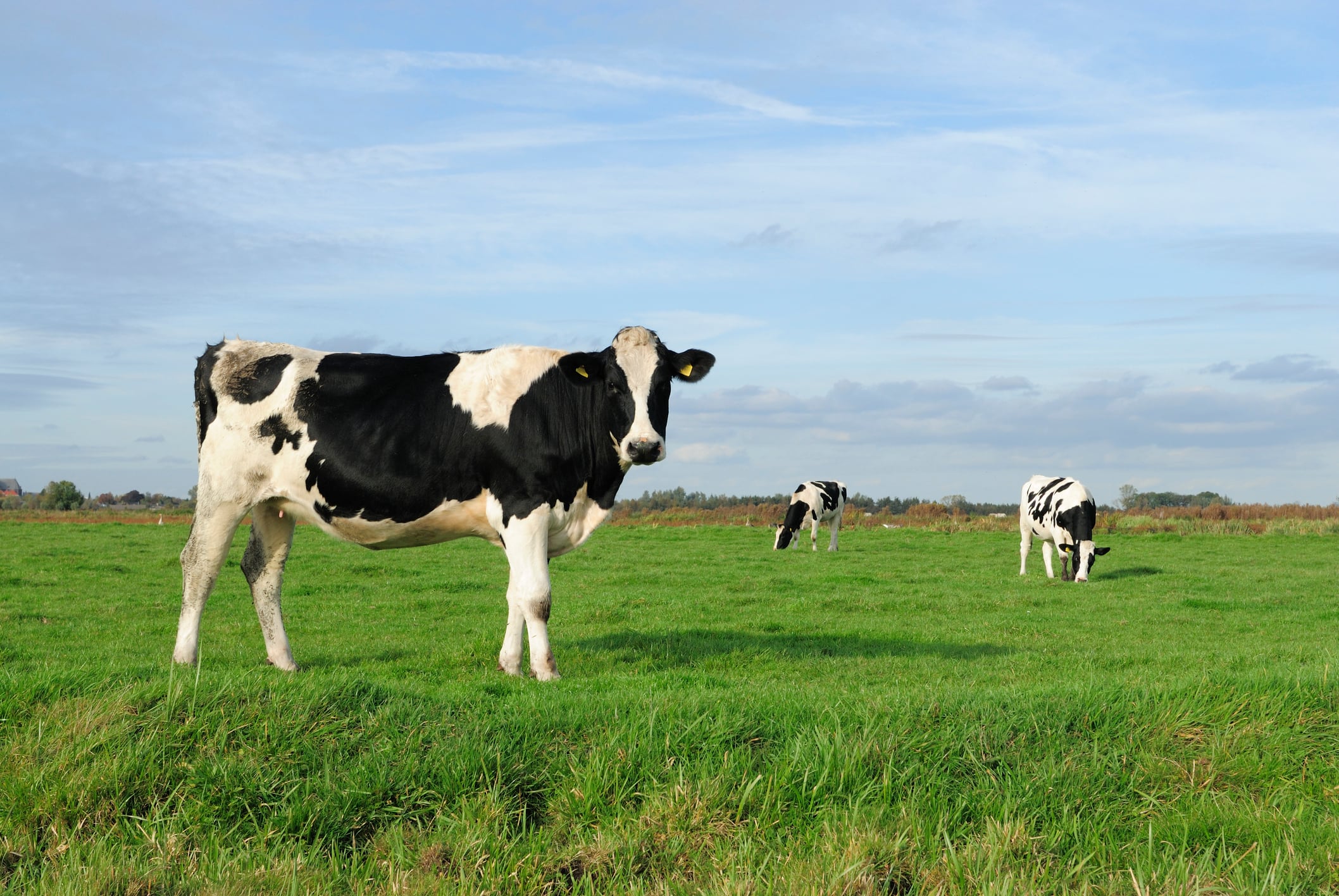The UK average farm-gate milk price dropped to 43.69 pence per litre (ppl) in April 2025, representing a 2.6% (1.2 ppl) fall from March, according to Defra figures. However, prices remain 14% higher than the year before (April 2024).
Milk volumes reached 1,396 million litres in April 2025, increasing by 1.8% since the previous month and by 6.5% since May 2023.
Butterfat (a natural fat component of milk) fell 1.7% from last month at 4.29%. Compared to last year, it is 0.5% lower than April 2024. Meanwhile, protein remained static at 3.41% between March and April 2025, seeing a marginal drop of 0.4% on the year (vs April 2024).
It should be noted that the monthly price data from Defra does not include retrospective bonus payments.
Offering her expert analysis, Susie Stannard, lead analyst for dairy at AHDB told Food Manufacture that whilst there has been a dip in milk prices, it’s “only a gradual easing” with milk prices “still at historically good levels”.
Earlier this year, AHDB said the outlook for dairy was optimistic, predicting production to see growth of 1.1% in 2025, despite challenges.
While growth for the first half of 2024/25 milk year was sluggish, with wet weather in spring and lower prices leading to reduced yields, last September saw prices climbing and margins improving.
This was thanks to favourable weather conditions allowing cows to stay out in the fields for longer and thereby contributing to a resurgence in milk flows. By November and December 2024, milk deliveries saw notable increases, with volumes up by 4.5% and 3.3%, respectively.
More recent analysis from AHDB has showed the average milk volume per farm in GB has climbed by 4%, reaching an estimated 1.77 million litres per farm for the year, from April 2024 to April 2025. Its latest forecast for the 2025/26 milk year suggests we’ll see a record high at 12.83 billion litres, 3.1% more than the previous milk year.
Stannard added: “Feed costs are also reasonable which means the milk to feed price ratio is at an almost 20-year high. This means we are seeing very strong milk production. June to date is up 6.2% year-on-year.
“The farmgate prices have eased slightly as commodity prices have eased slightly over time. In the latest month we’ve actually seen butter and cream rising again and cheddar down slightly.
“Usually when we see very strong milk production, we would see milk prices coming down to signal to farmers to produce less. However, there has been a shortage of milk on mainland Europe and especially fats stocks have been low which has kept demand high and prices up.”
GB dairy producers fall
Despite this hike in volume, the AHDB’s latest survey of milk buyers revealed an estimated 7,040 dairy producers in GB as of April 2025. This is an estimated loss of 160 producers since the previous survey in October.
Against a backdrop of climbing volumes it suggests a continued shift towards fewer but larger farms.
When comparing to annual April figures, an estimated 190 producers (-2.6%) left the industry, which AHDB says shows that the majority of exits took place over the winter months.
This has been an ongoing trend, with industry exits typically occurring before winter housing and additional input requirements, such as feed, become seasonally higher. The 2024 winter period also saw changes to government support and additional supply chain requirements introduced for some producers.
“Producer numbers have just declined again, but production has remained strong reflecting greater consolidation in the sector,” reflected Stannard.
“Those who are choosing to leave have left at a period of good margins and is likely to be reflective of the longer-term structural challenges including inheritance tax, bigger regulatory burdens including environmental compliance measures requiring high investment, interest rates, lack of access to labour and an aging average age of farmers. As beef prices have been very high some will have seen an opportunity to exit the sector.”


